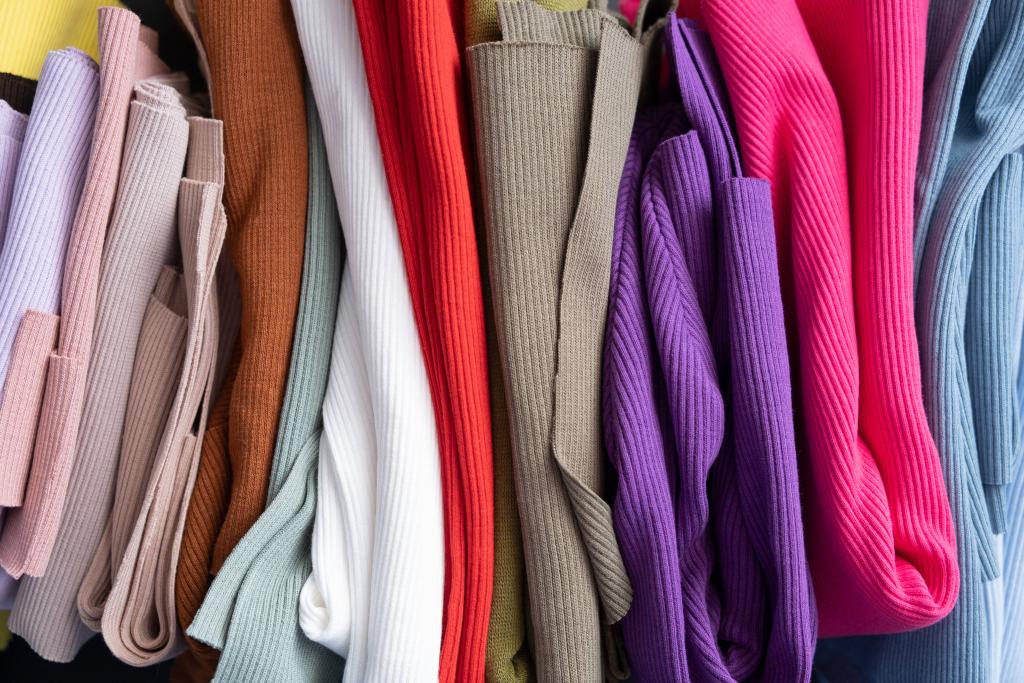🧵 Understanding Fabrics: What You’re Really Wearing
A beginner-friendly guide to what's in your clothes
Most of us look at clothing for style, comfort, or fit—but how often do we stop and think about the fabric? Understanding what you're really wearing can make a big difference in how you shop, how your clothes feel, how long they last, and even their impact on the environment.
Here’s a quick guide to help you decode common fabrics, their benefits, and what to look out for when buying your next outfit.
👚 Natural Fabrics
1. Cotton
Feel: Soft, breathable, lightweight
Pros: Comfortable, good for everyday wear
Cons: Can shrink in the wash, not the most eco-friendly in large-scale production
🔹 Tip: Look for organic cotton for a more sustainable option.
2. Linen
Feel: Crisp, airy, textured
Pros: Perfect for hot weather, biodegradable
Cons: Wrinkles easily
🔹 Best for: Summer shirts, trousers, and breezy dresses.
3. Wool (includes Merino, Cashmere, Alpaca)
Feel: Warm, textured, soft to coarse
Pros: Naturally insulating, breathable
Cons: Can be itchy, may require hand washing
🔹 Style tip: Choose Merino wool for softness or Cashmere for luxury.
🧥 Synthetic Fabrics
4. Polyester
Feel: Smooth, lightweight, durable
Pros: Wrinkle-resistant, quick-drying
Cons: Not breathable, made from plastic
🔹 Good for: Workout gear, outerwear—but avoid for hot climates.
5. Nylon
Feel: Silky and stretchy
Pros: Strong, dries fast
Cons: Can trap heat and odor
🔹 Use in: Activewear, lingerie, tights, and jackets.
6. Acrylic
Feel: Similar to wool, soft
Pros: Affordable, warm
Cons: Not breathable, pills over time
🔹 Common in: Winter scarves, sweaters, and beanies.
🧶 Blended Fabrics
Blends like poly-cotton or spandex-cotton combine the best of both worlds—stretch, comfort, durability, and breathability. But they can be harder to recycle.
🔹 Always check the tag! Knowing the blend helps you understand how a garment will wear, wash, and feel.
🌱 Bonus: Sustainable & Innovative Fabrics
- Tencel (Lyocell): Eco-friendly, silky-soft, breathable
- Bamboo Fabric: Soft, natural antibacterial properties
- Hemp: Durable, breathable, gets softer over time
- Recycled polyester: Made from recycled plastics
💬 Final Thoughts
Knowing what your clothes are made of empowers you to shop smarter, wear more comfortably, and live more sustainably. The next time you pick up a shirt or a sweater, flip the tag and give it a second thought—you might be surprised by what you’re really wearing.
📂 Subcategory:Fashion & Personal Style → Fabric & Material Guides
🏷️ Hashtags: #KnowYourFabrics #SustainableStyle #SmartShopping #POPUPPEDIA #FashionTips










